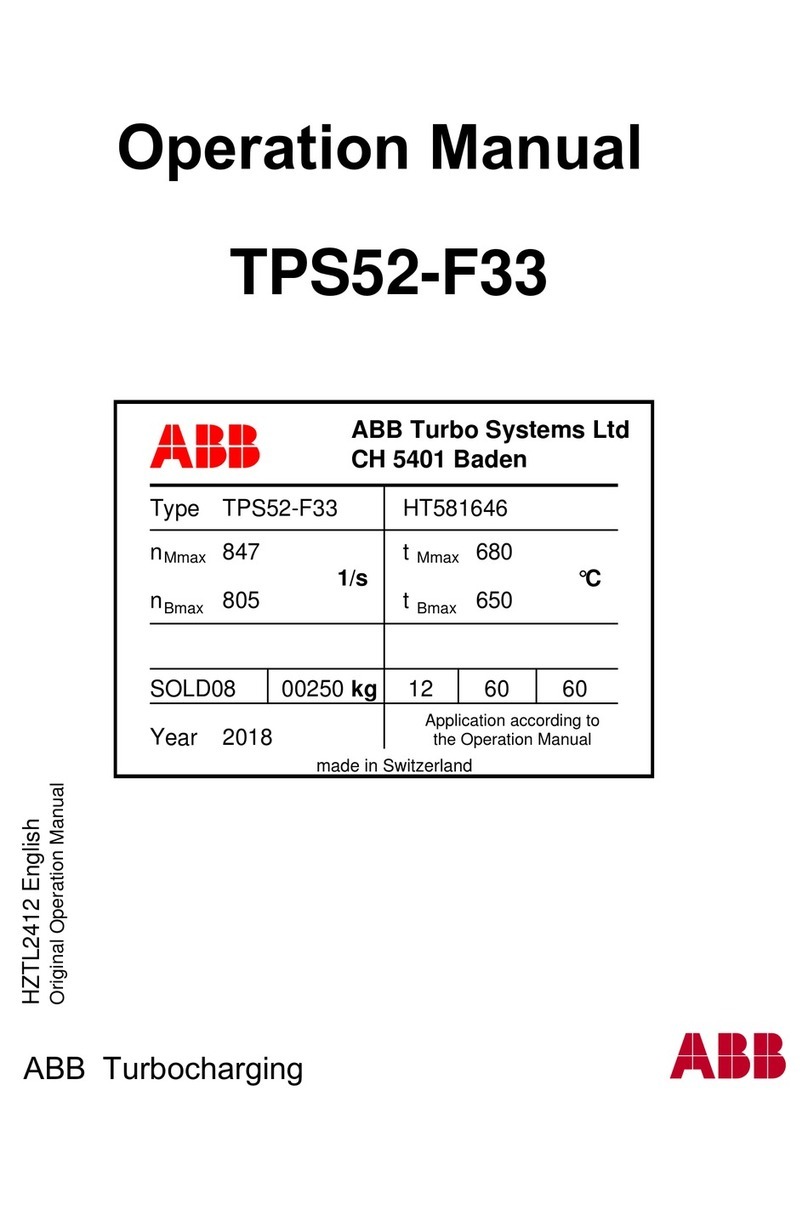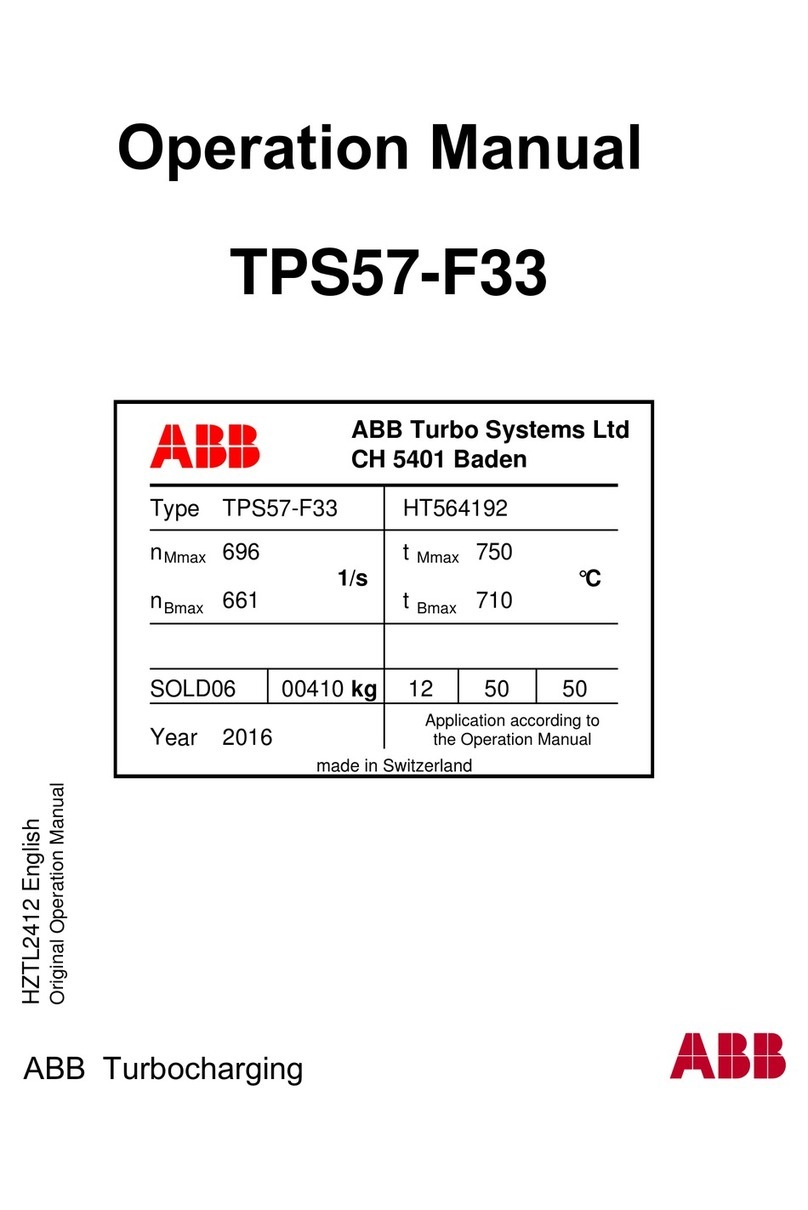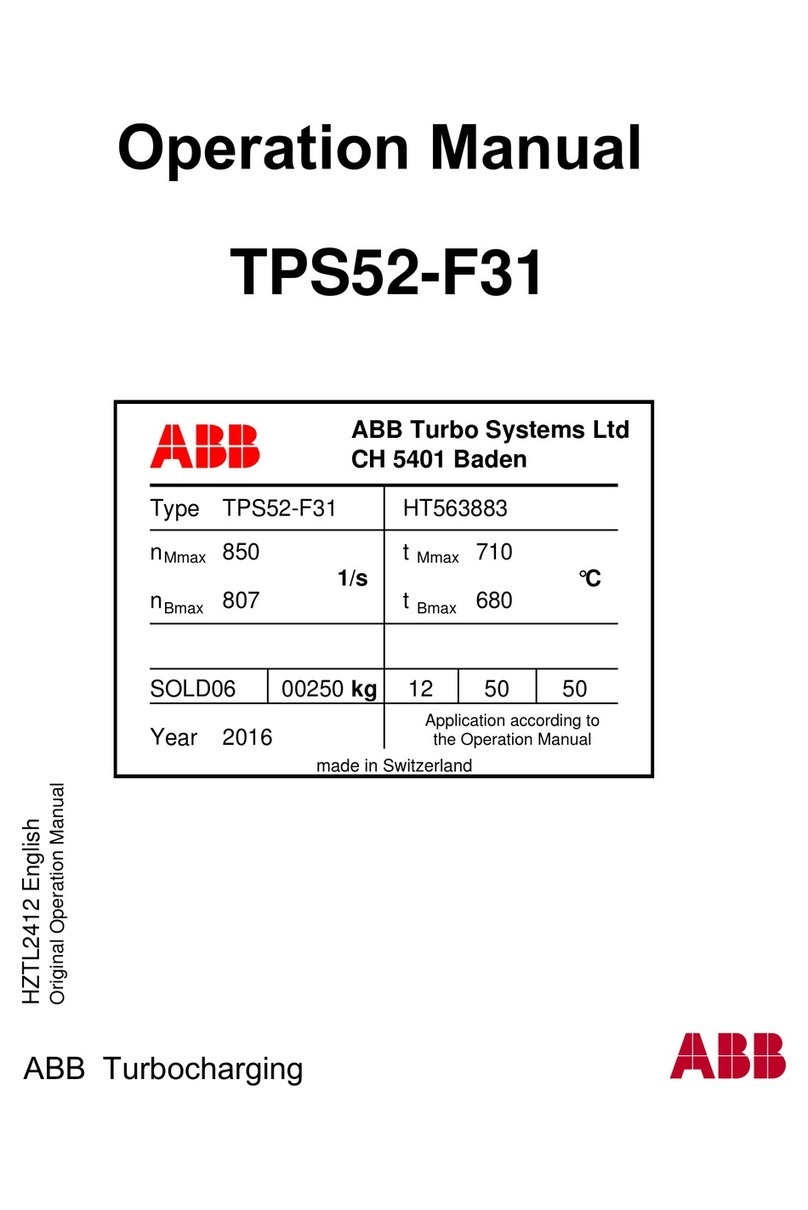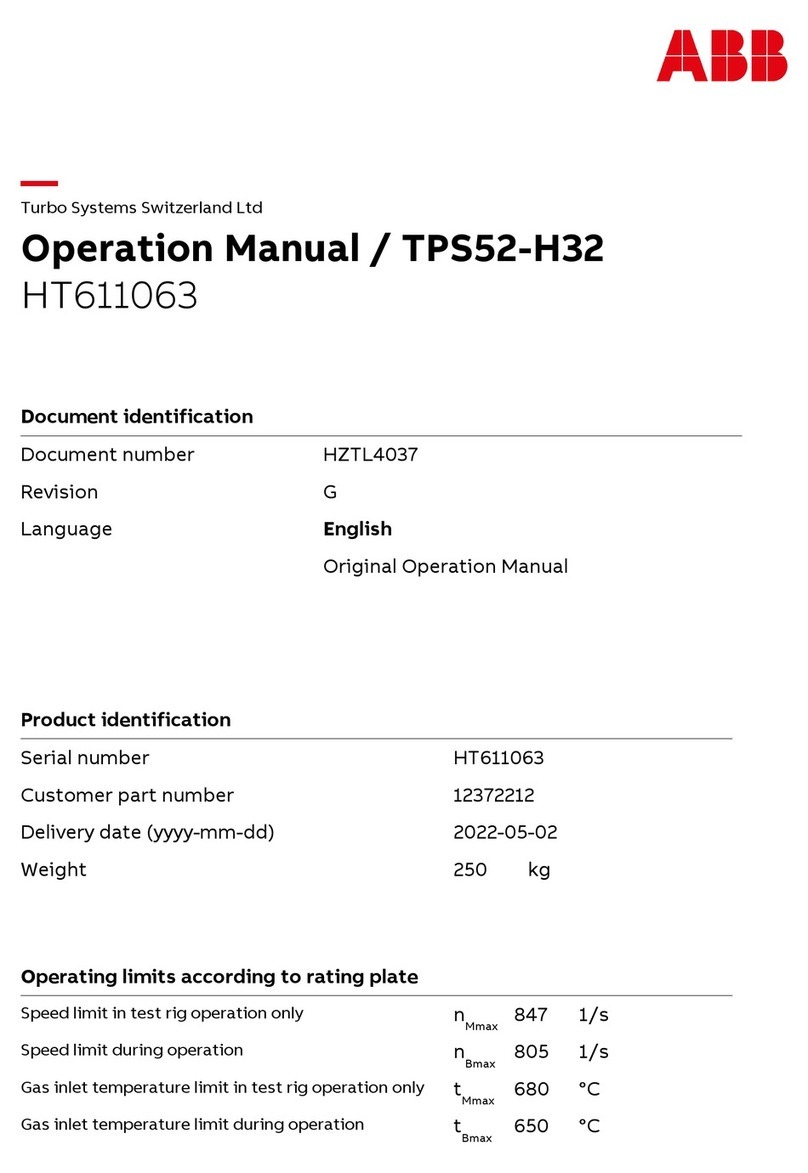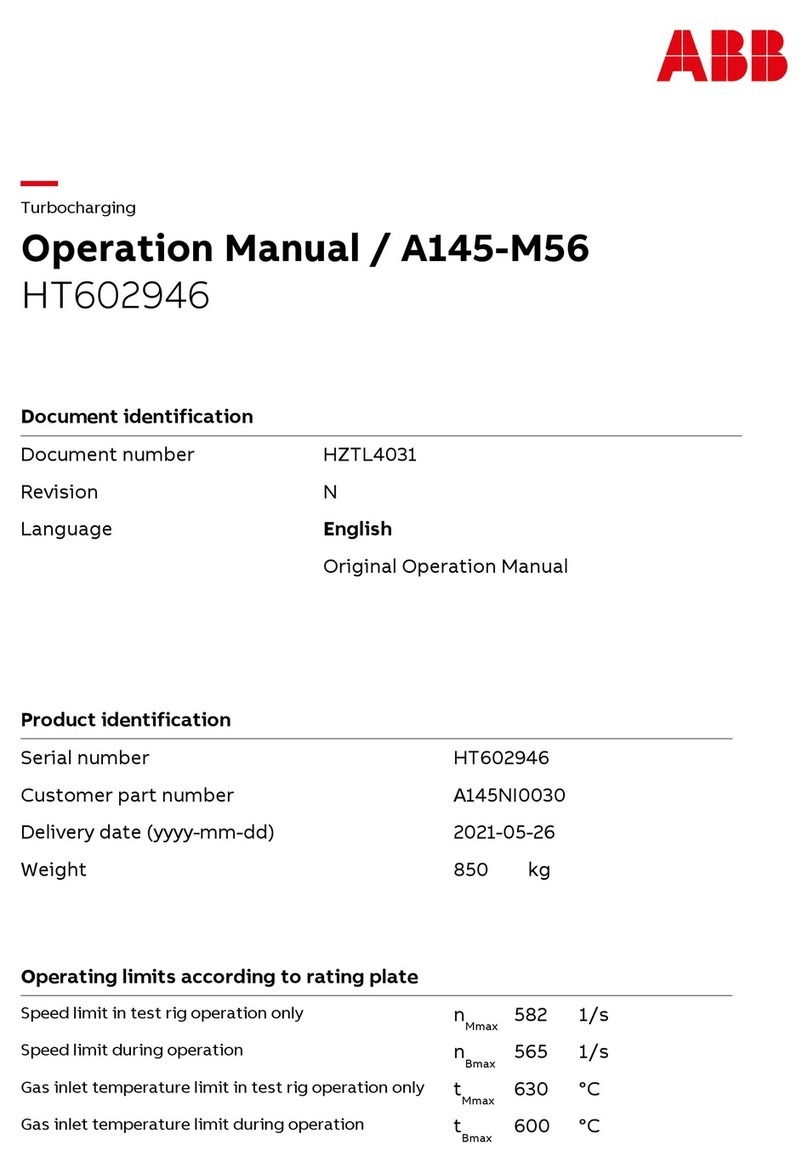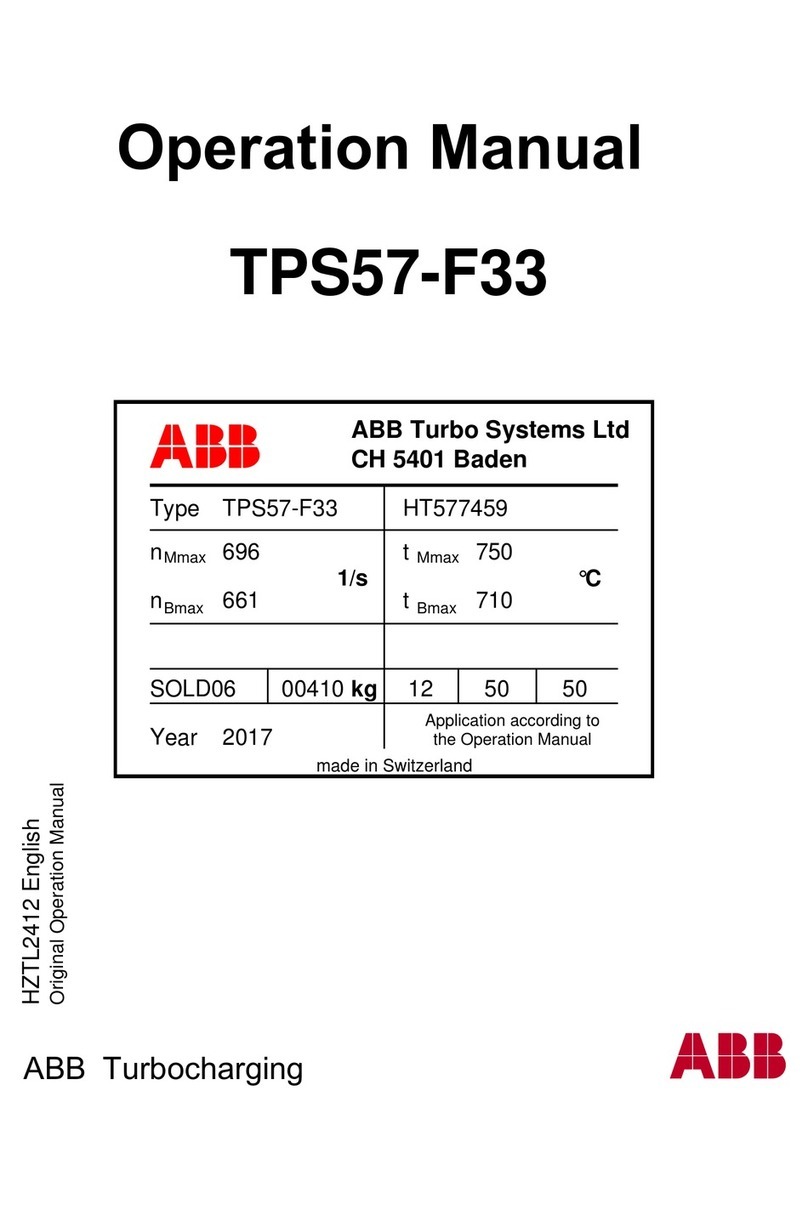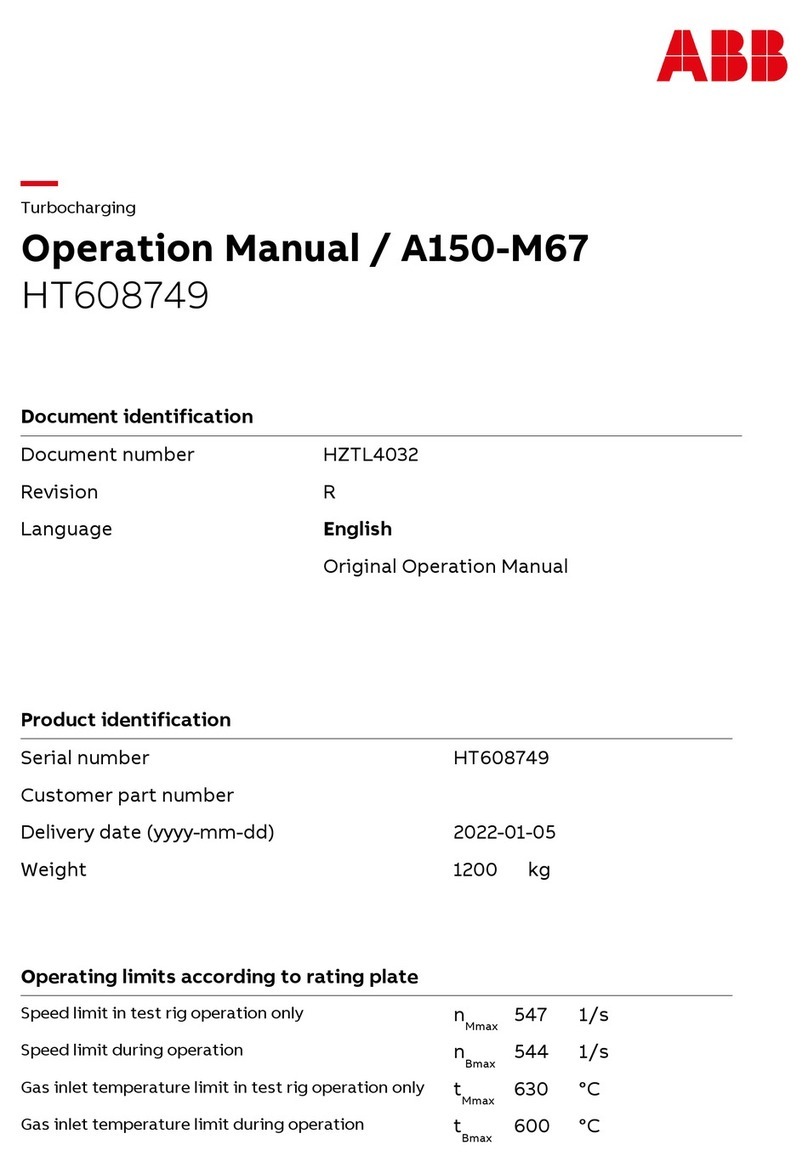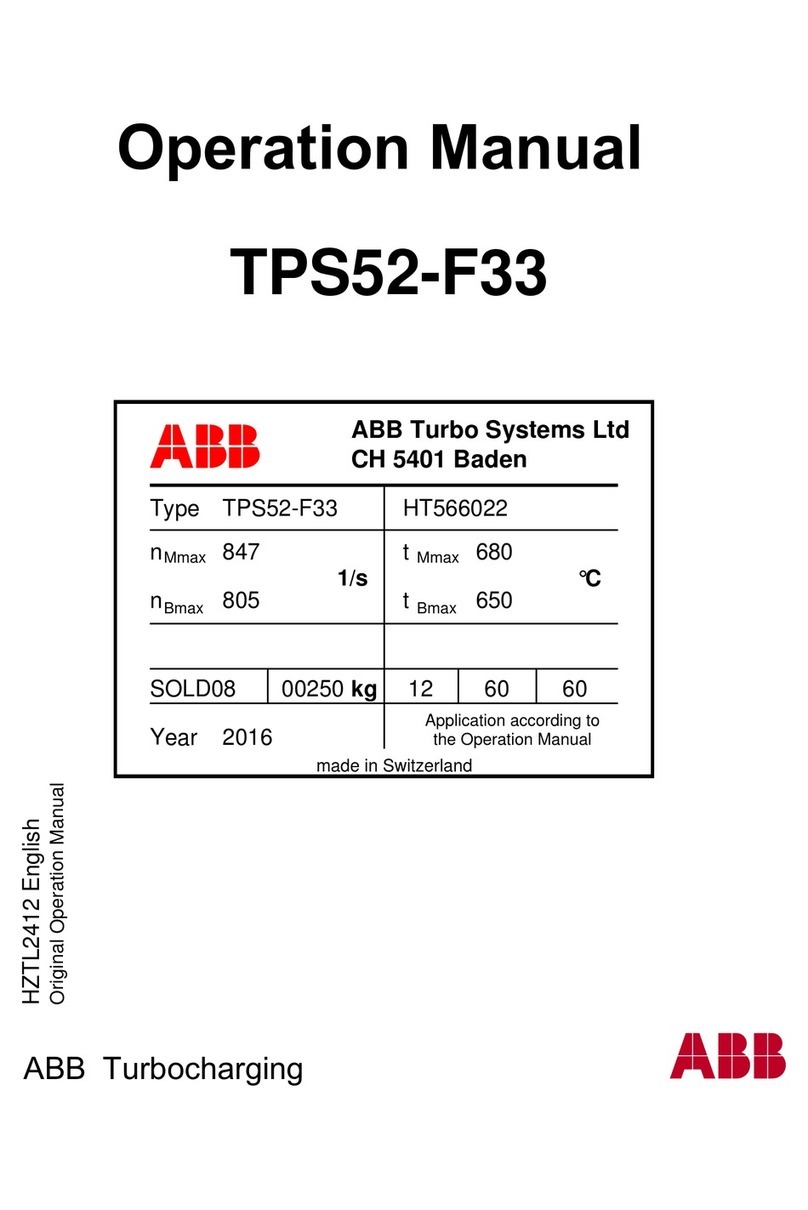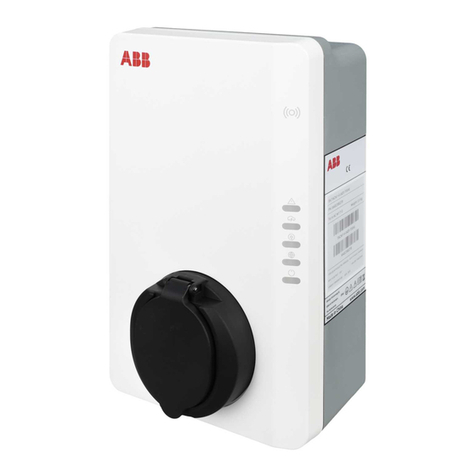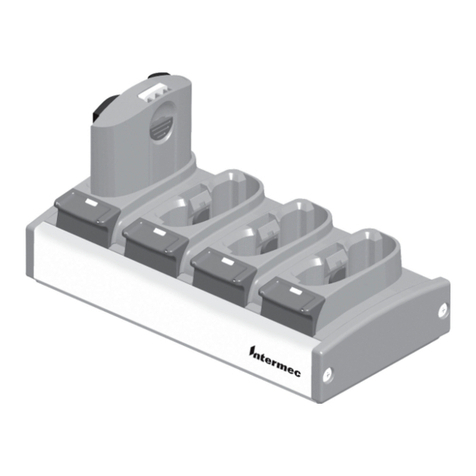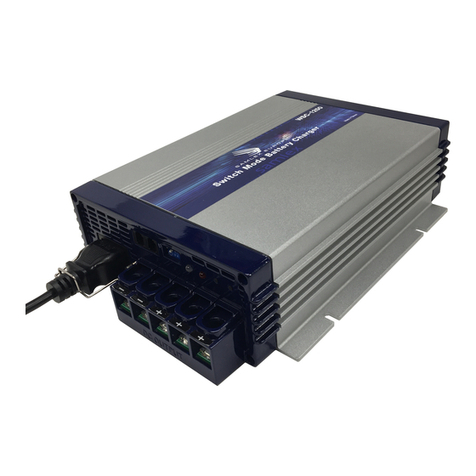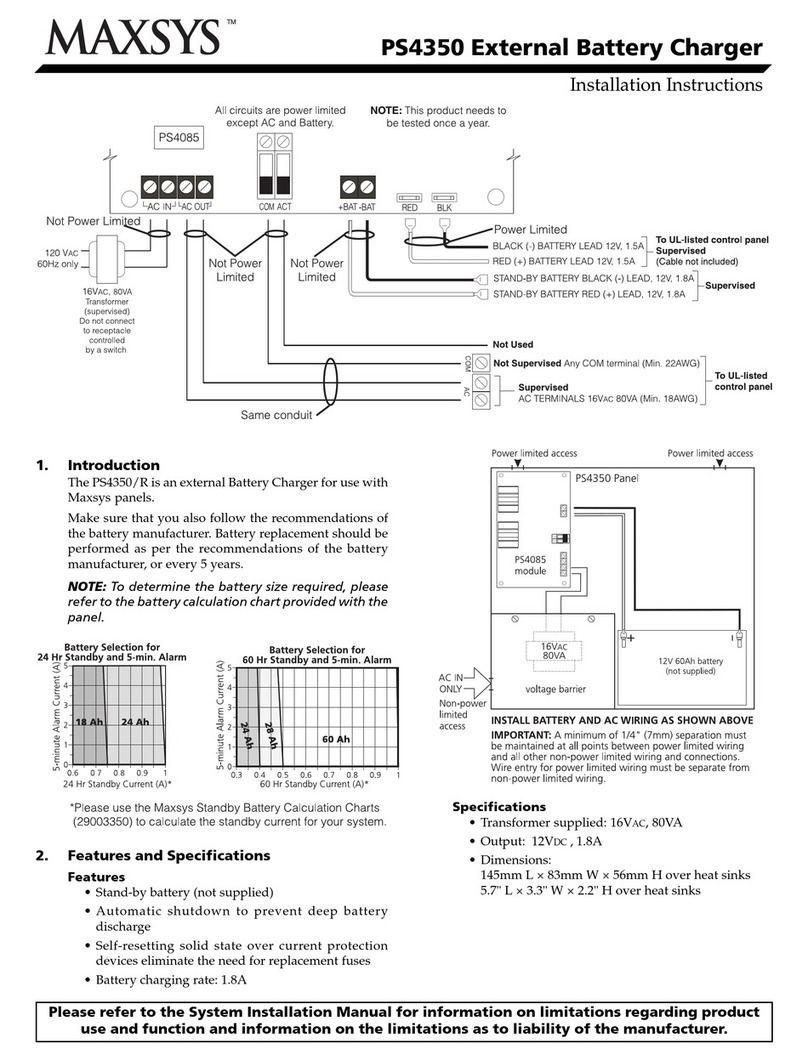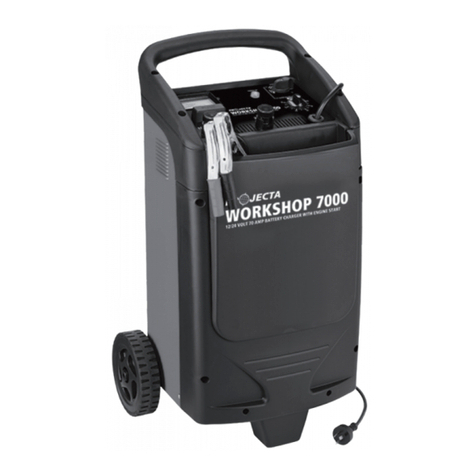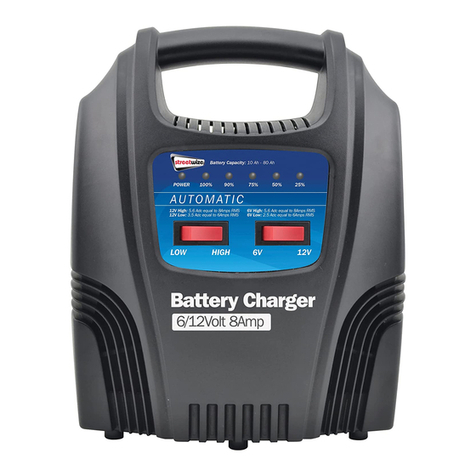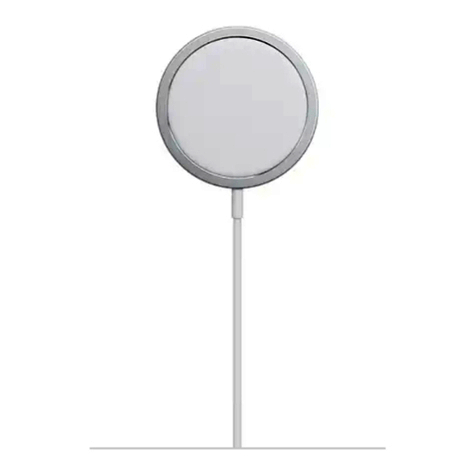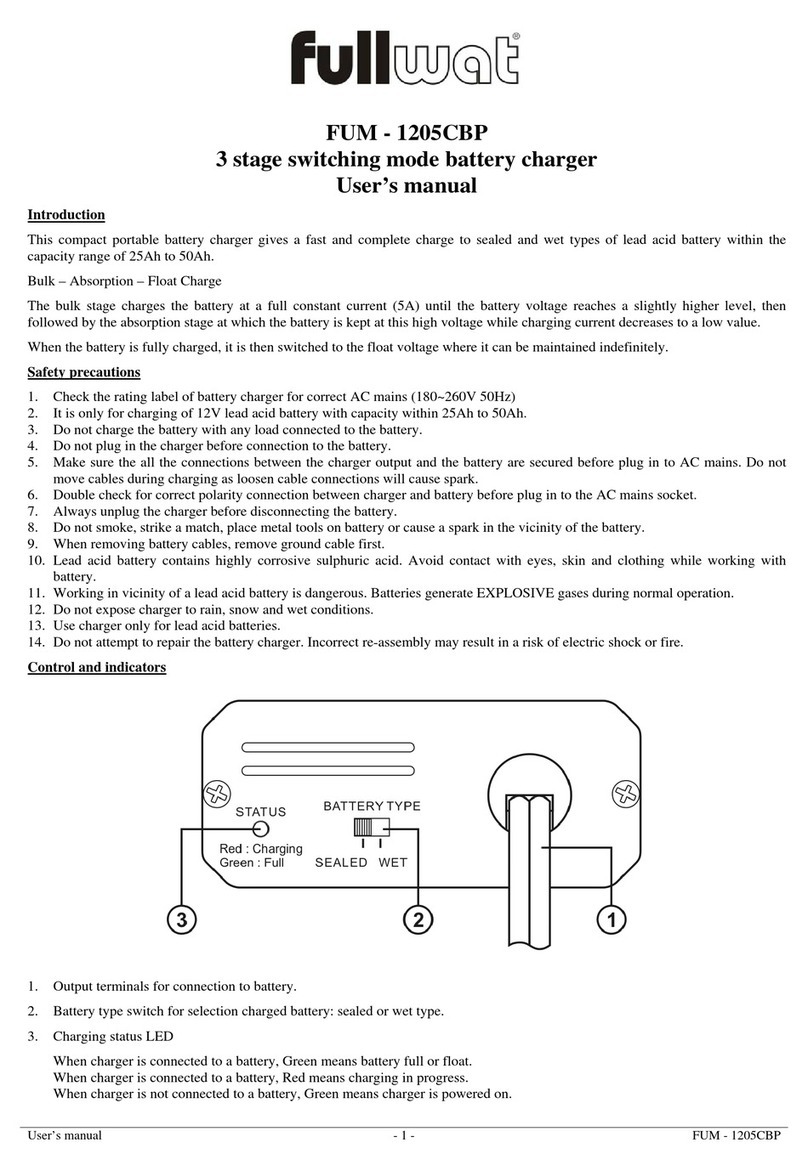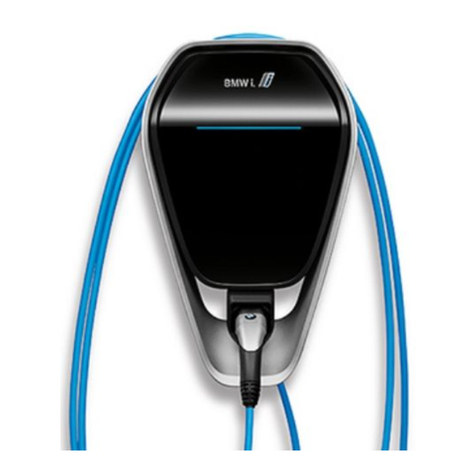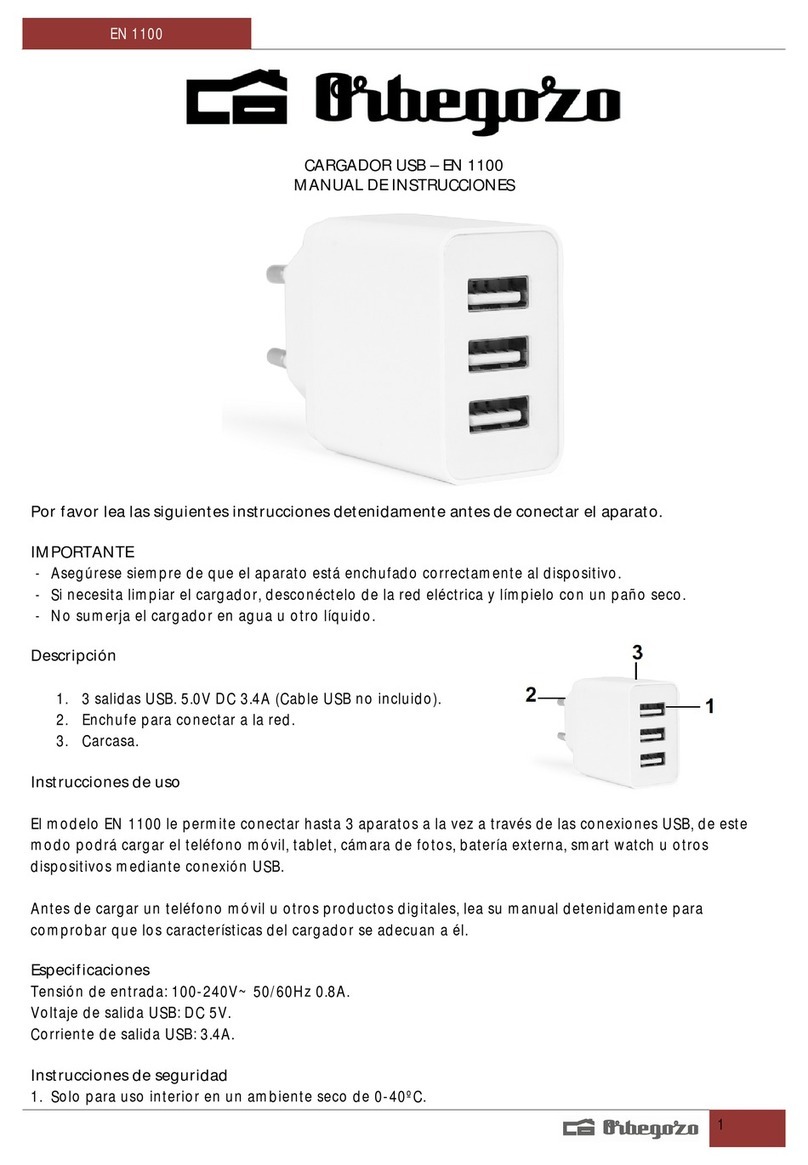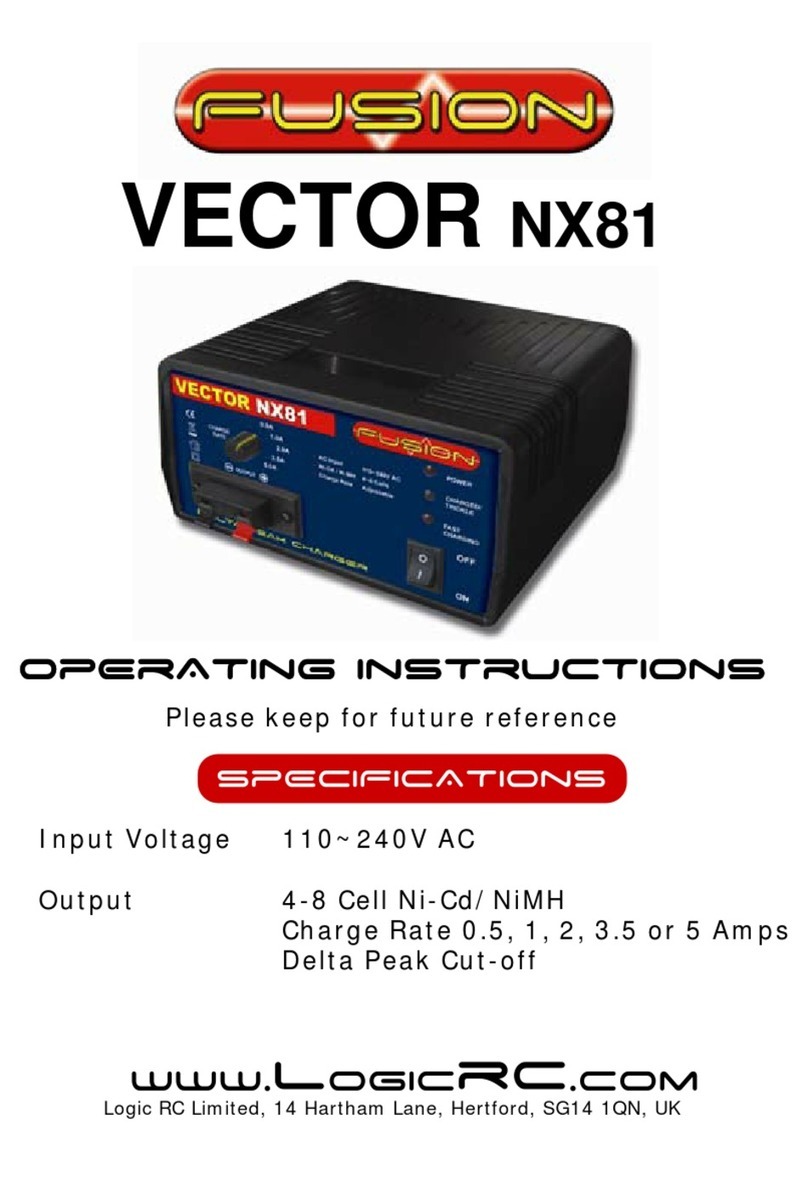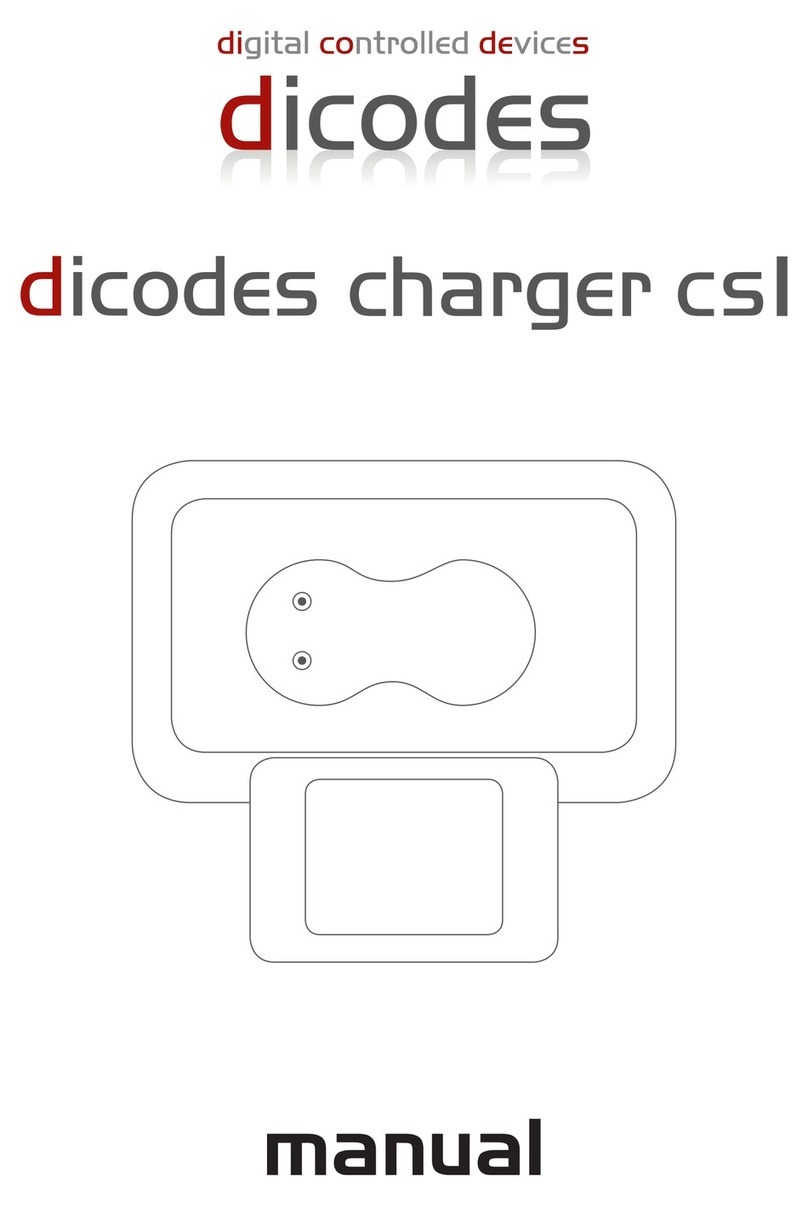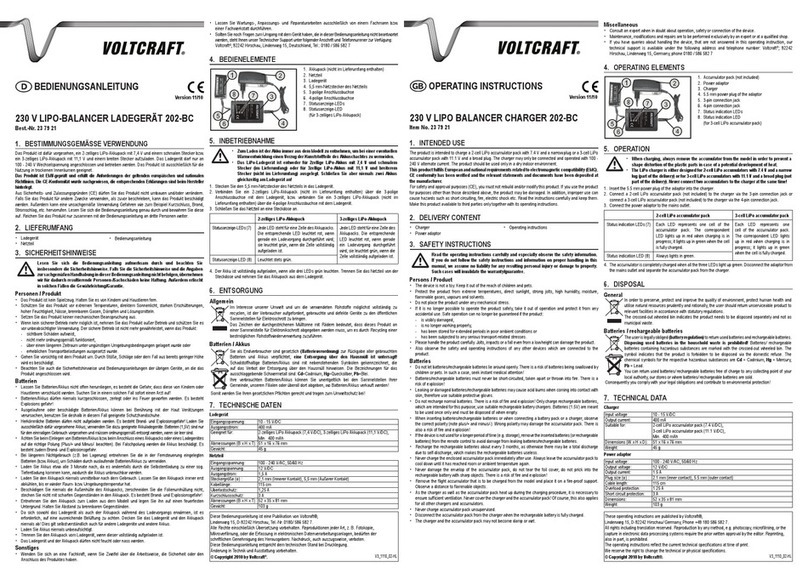ABB Terra Mobile 44HV Specification sheet

Operation and installation manual
Terra Mobile 44HV / 54HV CE
© Copyright 2023 ABB. All rights reserved

Copyright
All rights to copyrights, registered trademarks, and trademarks reside with their respective
owners.
Copyright ® ABB E-mobility B.V.. All rights reserved.
29AKK108467A6997-EN | 003

Contents
1 About this document.......................................................................... 7
1.1 Function of this document.......................................................................................................7
1.2 Target group............................................................................................................................... 7
1.3 Revision history..........................................................................................................................7
1.4 Language..................................................................................................................................... 7
1.5 Illustrations................................................................................................................................. 7
1.6 Units of measurement.............................................................................................................. 7
1.7 Typographical conventions..................................................................................................... 8
1.8 How to use this document.......................................................................................................8
1.9 General symbols and signal words.........................................................................................8
1.10 Special symbols for warnings and dangers..........................................................................9
1.11 Related documents..................................................................................................................10
1.12 Manufacturer and contact data............................................................................................ 10
1.13 Abbreviations............................................................................................................................10
1.14 Terminology...............................................................................................................................11
1.15 Orientation agreements......................................................................................................... 12
2 Safety.................................................................................................. 13
2.1 Liability.......................................................................................................................................13
2.2 General safety instructions....................................................................................................13
2.3 Responsibilities for the owner.............................................................................................. 14
2.4 Required qualifications for the installation engineer.......................................................14
2.5 Personal protective equipment.............................................................................................14
2.6 Safety instructions during installation................................................................................15
2.7 Safety instructions during transport...................................................................................15
2.8 Safety instructions for earthing............................................................................................16
2.9 Safety instructions for use.....................................................................................................16
2.10 Signs on the EVSE.................................................................................................................... 16
2.11 Discard the EVSE or parts of the EVSE.................................................................................17
2.12 Cyber security........................................................................................................................... 17
3 Description......................................................................................... 19
3.1 Type plate.................................................................................................................................. 19
3.2 Intended use............................................................................................................................. 19
3.3 Working principles.................................................................................................................. 20
3.3.1 General working principle..................................................................................... 20
3.3.2 Working principle of the DC charging unit and the control unit.................... 21
3.4 Overview.................................................................................................................................... 22
3.4.1 Overview of the system......................................................................................... 22
Contents
9AKK108467A6997-EN | 003 3

3.4.2 Overview of the EVSE, outside............................................................................. 23
3.4.3 Overview of the EVSE, inside................................................................................ 24
3.5 Authorization to charge......................................................................................................... 25
3.6 Options...................................................................................................................................... 25
3.6.1 EV charge cable, CCS 2........................................................................................... 25
3.6.2 Socket, Type 2..........................................................................................................26
3.7 Power allocation strategy...................................................................................................... 26
3.8 External residual-current device...........................................................................................26
3.9 Description of the touchscreen............................................................................................ 27
3.9.1 General description of the layout.........................................................................27
3.9.2 General description of the buttons..................................................................... 27
3.10 Local service portal................................................................................................................. 28
3.10.1 Local Service Portal.................................................................................................28
3.10.2 General description of the buttons.....................................................................29
4 Inspection and transport..................................................................31
4.1 Transport the EVSE to the site..............................................................................................31
4.2 Unpacking..................................................................................................................................31
4.2.1 Unpacking procedure............................................................................................. 31
4.2.2 Unpack the EVSE..................................................................................................... 32
4.2.3 Do a check on the transport sensors.................................................................. 32
4.3 Packing.......................................................................................................................................32
4.3.1 Pack the EVSE...........................................................................................................32
4.4 Transport the EVSE on the site.............................................................................................33
4.4.1 Move the EVSE with a forklift truck..................................................................... 33
4.4.2 Hoist the EVSE......................................................................................................... 33
5 Installation......................................................................................... 35
5.1 General installation procedure..............................................................................................35
5.2 Site preparation....................................................................................................................... 35
5.2.1 Prepare the site....................................................................................................... 35
5.2.2 Control the space and airflow around the cabinet...........................................35
5.3 Electrical installation.............................................................................................................. 36
5.3.1 Connect the AC input cable...................................................................................36
5.4 Prepare for commissioning................................................................................................... 36
6 Operation........................................................................................... 38
6.1 Prepare before use.................................................................................................................. 38
6.2 Stop the EVSE if there is an emergency.............................................................................. 38
6.3 Reset the EVSE after an emergency.....................................................................................39
6.4 Energize the EVSE....................................................................................................................39
6.5 Charge session.........................................................................................................................39
6.5.1 Charge an EV............................................................................................................39
Contents
49AKK108467A6997-EN | 003

6.5.2 Start a charge session........................................................................................... 40
6.5.3 Stop a charge session............................................................................................40
6.6 Remove condensation from the cabinet............................................................................ 40
6.7 Local service portal operations.............................................................................................41
6.7.1 Start the local service portal.................................................................................41
6.7.2 Set the configuration parameters....................................................................... 41
6.7.3 Set the OCPP parameters......................................................................................41
6.7.4 Install new software............................................................................................... 42
6.7.5 Close the local service portal................................................................................42
7 Maintenance and cleaning................................................................43
7.1 Maintenance schedule............................................................................................................43
7.2 De-energize the EVSE..............................................................................................................43
7.2.1 De-energize the EVSE - general procedure........................................................ 43
7.2.2 Measure the AC voltage.........................................................................................44
7.2.3 Measure the DC voltage.........................................................................................45
7.3 Clean the cabinet.....................................................................................................................45
7.4 Do a check for damage on the EVSE....................................................................................46
7.5 Replace the air inlet filters.....................................................................................................46
7.5.1 Replace the air inlet filter on the front................................................................46
7.5.2 Replace the air inlet filter on the side................................................................. 47
7.6 Replace the air outlet filter ................................................................................................... 48
8 Disconnect......................................................................................... 49
8.1 Remove the AC input cable....................................................................................................49
9 Access to parts.................................................................................. 50
9.1 Open the doors........................................................................................................................50
9.2 Close the doors........................................................................................................................50
10 Troubleshooting................................................................................ 52
10.1 Troubleshooting procedure...................................................................................................52
10.2 Troubleshooting table............................................................................................................ 52
11 Technical data....................................................................................54
11.1 EVSE type.................................................................................................................................. 54
11.2 Parts included in the delivery................................................................................................54
11.3 General specifications............................................................................................................55
11.4 Required tools for installation.............................................................................................. 55
11.5 Maintenance schedule for the service engineer................................................................55
11.6 Operating conditions..............................................................................................................56
11.7 Mass........................................................................................................................................... 56
Contents
9AKK108467A6997-EN | 003 5

11.8 Center of gravity location...................................................................................................... 56
11.9 Noise level................................................................................................................................. 56
11.10 Spare parts............................................................................................................................... 56
11.11 Cleaning specifications.......................................................................................................... 57
11.12 Transport specifications........................................................................................................57
11.13 Dimensions............................................................................................................................... 57
11.13.1 General dimensions................................................................................................ 57
11.13.2 Floor space requirements..................................................................................... 58
11.14 Communication interface specifications........................................................................... 58
11.15 AC input specifications.......................................................................................................... 59
11.15.1 General AC input specifications...........................................................................59
11.15.2 AC input specifications (Terra Mobile 44HV)....................................................59
11.15.3 AC input specifications (Terra Mobile 54HV).................................................... 59
11.15.4 General AC input cable specifications................................................................ 59
11.15.5 AC input cable specifications (Terra Mobile 44HV)......................................... 59
11.15.6 AC input cable specifications (Terra Mobile 54HV)......................................... 60
11.15.7 Connector types for the AC input cable.............................................................60
11.16 DC output specifications.......................................................................................................60
11.16.1 DC output specifications (Terra Mobile 44HV)................................................ 60
11.16.2 DC output specifications (Terra Mobile 54HV).................................................62
11.17 AC output specifications....................................................................................................... 64
11.18 Power consumption................................................................................................................64
11.19 In-rush current..........................................................................................................................65
Contents
69AKK108467A6997-EN | 003

1 About this document
1.1 Function of this document
The document is only applicable for this EVSE (Terra Mobile 44HV / 54HV), including
the variants and options listed in section 11.1.
The document gives the information that is necessary to safely do these tasks:
• Install the EVSE
• Use the EVSE
• Do basic maintenance tasks
Note: "Terra Mobile 44HV / 54HV": This is a generic name for the EVSE to
address the main types of the EVSE.
1.2 Target group
The document is intended for these groups:
• Owner of the EVSE
• Installation engineer
For a description of the responsibilities of the owner, refer to section 2.3.
For the required qualifications for the installation engineer, refer to section 2.4.
1.3 Revision history
Version Date Description
001 November 2021 Initial version
002 January 2023 Textual updates
1.4 Language
The original instructions of this document are in English (EN-US). All other language
versions are translations of the original instructions.
1.5 Illustrations
It is not always possible to show the configuration of your EVSE. The illustrations in
this document show a typical setup. They are for instruction and description only.
1.6 Units of measurement
SI units of measurement (metric system) are used. If necessary, the document
shows other units between parentheses () or in separate columns in tables.
About this document
9AKK108467A6997-EN | 003 7

1.7 Typographical conventions
The lists and steps in procedures have numbers (123) or letters (abc) if the sequence
is important.
1.8 How to use this document
1. Make sure that you know the structure and contents of this document.
2. Read the safety chapter and make sure that you know all the instructions.
3. Do the steps in the procedures fully and in the correct sequence.
4. Keep the document in a safe location that you can easily access. This document
is a part of the EVSE.
1.9 General symbols and signal words
Signal word Description Symbol
Danger If you do not obey the instruction, this
can cause injury or death.
Refer to section
1.10.
Warning If you do not obey the instruction, this
can cause injury.
Refer to section
1.10.
Caution If you do not obey the instruction, this
can cause damage to the EVSE or to
property.
Note A note gives more data, to make it easier
to do the steps, for example.
- Information about the condition of the
EVSE before you start the procedure.
- Requirements for personnel for a proce-
dure.
- General safety instructions for a proce-
dure.
- Information about spare parts that are
necessary for a procedure.
- Information about support equipment
that is necessary for a procedure.
- Information about supplies (consuma-
bles) that are necessary for a procedure.
About this document
89AKK108467A6997-EN | 003

Signal word Description Symbol
- Make sure that the power supply to the
EVSE is disconnected.
- Electrotechnical expertise is required,
according to the local rules.
- Alternating current supply
Note: It is possible that not all symbols or signal words are present in this
document.
1.10 Special symbols for warnings and dangers
Symbol Risk type
General risk
Hazardous voltage that gives risk of electrocution
Risk of pinching or crushing of body parts
Rotating parts that can cause a risk of entrapment
Hot surface that gives risk of burn injuries
Note: It is possible that not all symbols are present in this document.
About this document
9AKK108467A6997-EN | 003 9

1.11 Related documents
Document name Target group
Product data sheet All target groups
Service manual Qualified service engineer
Declaration of conformity (CE) All target groups
1.12 Manufacturer and contact data
Manufacturer
ABB E-mobility B.V.
Heertjeslaan 6
2629 JG Delft
The Netherlands
Contact data
ABB E-mobility B.V. in your country can give you support on the EVSE. You can find
the contact data here: https://new.abb.com/ev-charging
1.13 Abbreviations
Abbreviation Definition
AC Alternating current
BESS Battery energy storage system
CAN Controller area network
CPU Central processing unit
DC Direct current
EMC Electromagnetic compatibility
EV Electric vehicle
EVSE Electric vehicle supply equipment
MID Measuring Instruments Directive
NFC Near field communication
NoBo Notified body
OCPP Open charge point protocol
PE Protective earth
PPE Personal protective equipment
RFID Radio-frequency identification
Note: It is possible that not all abbreviations are present in this
document.
About this document
10 9AKK108467A6997-EN | 003

1.14 Terminology
Term Definition
Network operating center
of ABB EV Infrastructure
Facility of the manufacturer to do a remote check on
the correct operation of the EVSE
Cabinet Enclosure of the EVSE, including the components on
the inside
Cable slack Extra length of cable from the top of the foundation
so that the cable length is sufficient to connect to the
correct terminal in the cabinet
CCS Combined Charging System, a standard charging
method for electric vehicles
CHAdeMO Abbreviation of
CHArge de MOve
, a standard charging
method for electric vehicles
Contractor Third party that the owner or site operator hires to do
engineering, civil and electrical installation work
Grid provider Company that is responsible for the transport and dis-
tribution of electricity
Local rules All rules that apply to the EVSE during the entire lifecy-
cle of the EVSE. The local rules also include the national
laws and regulations
Open charge point proto-
col
Open standard for communication with charge sta-
tions
Owner Legal owner of the EVSE
Protective devices Devices for the personal protection of individuals
against the risk of injury or electrcial shock when they
do commissioning, operation and maintenance activi-
ties. Examples of protective devices are a door, the
electrical parts covers, the latches, etc.
Site operator Entity that is responsible for the day-to-day control of
the EVSE. The site operator does not have to be the
owner
User Owner of an EV, who uses the EVSE to charge the EV
Note: It is possible that not all terms are present in this document.
About this document
9AKK108467A6997-EN | 003 11

1.15 Orientation agreements
A
D
C
B
X
Y
Z
A Front side: face forward to the
EVSE during normal use
B Left side
C Right side
D Rear side
X X-direction (positive is to the right)
Y Y-direction (positive is rearward)
Z Z-direction (positive is upward)
About this document
12 9AKK108467A6997-EN | 003

2 Safety
2.1 Liability
The manufacturer is not liable for damages, losses, costs or expenses incurred
by any user of the EVSE (e.g. the installation engineer or owner of the EVSE) if
such damages, losses, costs or expenses result from a failure to comply with the
applicable safety instructions given by the manufacturer, including, but not limited
to, the following:
• Power outages or disruptions to the electrical supply to the EVSE.
• Accumulation of dirt or ingress of foreign substances within the EVSE.
• Corrosion of component parts.
• Upgrades enhancements or modifications to the equipment or its use.
• Damage to software or hardware due to any IT security problem, such as but not
limited to a virus breakout or malicious hacking of the system.
• Damage or failure of equipment caused by vermin, insect infestations or the like.
• Damage or failure resulting from faults in some other equipment connected to
the scope of work.
• Damage or loss caused by hazards such as fire, flood, storm or the like or
spillage or leakage of chemicals or harmful substances onto the EVSE.
• Fault tracing caused by problems from a source external to the scope of work.
• Unprofessional or incorrect installation, installation not complying to standards,
or installation not following the installation instructions contained in the
product specific manual.
• Improper operation (in breach of the technical requirements or specifications or
manuals of the product), negligence or repairs carried out by the Owner (or any
third party not authorized by ABB).
• Non-compliance with the applicable safety regulations or other legal standards
by other parties than ABB.
• Insufficient ventilation of the EVSE.
• Operation of the EVSE outside of its design conditions.
• Relocation of the EVSE from the original installation location or alteration of the
overall system design.
• Only make changes to the EVSE if the manufacturer approves in writing of the
changes.
2.2 General safety instructions
• Only perform the procedures as indicated in this document.
• Only perform any services as installation engineer or use the EVSE when you are
fully qualified to do so.
• Comply with the local rules and the instructions in this manual. If the local rules
contradict the instructions in this manual, the local rules will apply.
If and to the extent permitted by law, in case of inconsistency or contradiction,
between any requirements or procedure contained in this document and any
such local laws and/or rules, comply with the stricter laws and/or rules,
requirements and procedures specified in this document.
Safety
9AKK108467A6997-EN | 003 13

2.3 Responsibilities for the owner
The owner is the person who runs the EVSE for commercial or business purposes
for itself or leaves it to a third party for use. During operation the owner bears legal
responsibility for the protection of the user, other employees or third parties. The
owner has the responsibilities that follow:
• To know and implement the local rules
• To identify the hazards (in terms of a risk assessment), resulting from the
working conditions on the site
• To operate the EVSE with the protective devices installed
• To make sure that all protective devices are installed after installation or
maintenance work
• To make an emergency plan that instructs people what to do in case of an
emergency
• To make sure that all employees and third parties are qualified according to the
applicable local rules to do the work
• To make sure that there is sufficient space around the EVSE to safely do
maintenance and installation work
• To identify a site operator who is responsible for the safe operation of the EVSE
and for the coordination of all work, if the owner does not do these tasks
2.4 Required qualifications for the installation engineer
• The qualified installation engineer fully knows the EVSE and its safe installation.
• The installation engineer is qualified according to the applicable local rules to do
the work.
• The qualified installation engineer obeys all local rules and the instructions in
the installation manual.
• It is the responsibility of the owner of the EVSE to make sure that all qualified
installation engineers obey the local rules, the installation instructions, and the
specifications of the EVSE.
2.5 Personal protective equipment
Symbol Description
Protective clothing
Safety gloves
Safety
14 9AKK108467A6997-EN | 003

Symbol Description
Safety shoes
Safety glasses
2.6 Safety instructions during installation
Preliminary requirements
•
Installation engineer
•
• Make sure that there is no voltage on the AC input cables during the complete
installation procedure.
• Keep unqualified personnel at a safe distance during installation.
• Only use electrical wires of sufficient gauge and insulation to handle the rated
current and voltage demand.
• Make sure that the load capacity of the grid is in accordance with the EVSE.
• Earth the EVSE correctly. Refer to section 2.8.
• Make sure that the wiring inside the EVSE is protected from damage and cannot
get trapped when you open or close the cabinet.
• Make sure that water cannot enter the cabinet.
• Protect the EVSE with safety devices and measures that the local rules specify.
• If it is necessary to remove safety devices, immediately install the safety devices
after the work.
• Put on the correct personal protective equipment. Refer to section 2.5.
2.7 Safety instructions during transport
Preliminary requirements
• Installation engineer •
• Make sure that the hoisting equipment or forklift truck can lift the EVSE safely.
Take into account the mass and the center of gravity of the EVSE.
Safety
9AKK108467A6997-EN | 003 15

• Obey the applicable safety instructions for the hoisting equipment or for the
forklift truck. For example, the instructions specified on the related shipment
label that is applied to the EVSE packaging.
• Put on the correct personal protective equipment. Refer to section 2.5.
2.8 Safety instructions for earthing
Preliminary requirements
•
• Make sure that the EVSE is connected to a grounded, metal, permanent wiring
system, or an equipment-grounding conductor must be run with the circuit
conductors and connected to the equipment grounding terminal or lead on the
product.
• Make sure that the connections to the EVSE comply with all applicable local
rules.
2.9 Safety instructions for use
Do not use the EVSE and immediately get in contact with the manufacturer if the
safety or the safe use of the EVSE is at risk. This includes, but is not limited to, these
conditions:
• An enclosure has damage.
• An EV charge cable or connector has damage.
• Lightning struck the EVSE.
• There was an accident or a fire at or near the EVSE.
• Water entered the EVSE.
2.10 Signs on the EVSE
Symbol Description
General risk
Hazardous voltage that gives risk of electrocution
Risk of pinching or crushing of body parts
Safety
16 9AKK108467A6997-EN | 003

Symbol Description
Rotating parts that can cause a risk of entrapment
Hot surface that gives risk of burn injuries
Appliance class 1
Sign that means that you must read the manual before
you install the EVSE
Waste from electrical and electronic equipment
Note: It is possible that not all symbols are present on the EVSE.
2.11 Discard the EVSE or parts of the EVSE
Incorrect waste handling can have a negative effect on the environment and human
health due to potential hazardous substances. With the correct disposal of this
product, you contribute to reuse and recycling of materials and protection of the
environment.
• Obey the local law and rules when you discard parts, packaging material or the
EVSE.
• Discard electrical and electronic equipment separately in compliance with the
WEEE - 2012/19/EU Directive on waste of electrical and electronic equipment.
• As the symbol of the crossed out wheeled-bin on your EVSE indicates, do not
mix or dispose the EVSE with your household waste, at the end of use. Instead,
hand the EVSE over to your local community waste collection point for recycling.
• For more information, contact the Government Waste-Disposal department in
your country.
2.12 Cyber security
Note: This topic is valid for a wired Ethernet connection.
This product is designed to be connected to and to communicate information and
data via a network interface. It is the Owner's sole responsibility to provide and
continuously ensure a secure connection between the product and Owner's network
or any other network (as the case may be).
Safety
9AKK108467A6997-EN | 003 17

The Owner shall establish and maintain any appropriate measures (such as but
not limited to the installation of firewalls, application of authentication measures,
encryption of data, installation of anti-virus programs, etc) to protect the product,
the network, its system and the interface against any kind of security breaches,
unauthorized access, interference, intrusion, leakage and/or theft of data or
information.
The manufacturer (ABB E-mobility B.V.) and its affiliates are not liable for
damages and/or losses related to such security breaches, any unauthorized access,
interference, intrusion, leakage and/or theft of data or information.
Safety
18 9AKK108467A6997-EN | 003

3 Description
3.1 Type plate
IP54
SN: XXXX-XXX-XXXX-XXX
Part number XXXXXXXXXX
Prod. date XX XXXX XXXXXXXXXXXX
XX XXXXX XX
FOR USE WITH ELECTRICAL VEHICLES
Input xxxV x+PE-
DC Input xxx-xxxV Max xxxA
DC Output 1 CCS2 xxx-xxxV Max xxxA
DC Output 2 CHAdeMO xxx-xxxV Max xxxA
Max x.xkW/xxHz
DC AUX xxV xA
Heertjeslaan 6,
2629 JG Delft,
The Nederlands
MADE IN ITALY www.abb.com
Weight XXX Kg
XXXXXXXXXX
XXXX-XXX-XXXX-XXX
A
B
C
D
E
G
H
I
J
F
K
L
M
A Manufacturer
B Serial number
C Part number of the EVSE
D Production date
E Internal product code (for the
manufacturer)
F Full EVSE type
G EVSE mass
H EVSE rating
I Address of the manufacturer
J CE mark
K Barcode with the serial number of
the EVSE
L Barcode with the part number of
the EVSE
M Additional EVSE rating data
Note: Find the type plate on your EVSE to see the applicable data. Refer
to section 3.4.2.
3.2 Intended use
The EVSE is intended for the DC charging of EVs. The EVSE is intended for indoor or
outdoor use.
The properties of the electrical grid, the ambient conditions and the EV must
comply with the technical data of the EVSE. Refer to chapter 11.
Only use the EVSE with accessories that the manufacturer provides and that obey
the local rules.
Description
9AKK108467A6997-EN | 003 19

Danger:
General risk
• If you use the EVSE in any other way than described in the related
documents, you can cause death, injury and damage.
• Use the EVSE only as intended.
3.3 Working principles
3.3.1 General working principle
A
L
R
B
D
M
E
IJ
F G H
K
Q
H
LH
N
O
P
C
A Power grid
B Main switch
C AC surge protection device
D AC residual-current circuit breaker
E Miniature circuit breaker
F AC 22 kW socket
G AC charge cable
H EV
I AC filter
J Residual-current device
K DC charging module
L DC charge cable
M Residual-current circuit breaker for
the auxiliary AC circuit
N Auxiliary surge protection device
O Auxiliary AC residual-current device
P Auxiliary power supply
Q Control unit
R Heater
• Red and bold lines: AC power connection
• Black and bold lines: DC power connection
• Black and thin lines: auxiliary power connection
• Green lines: control signal or monitoring signal
Description
20 9AKK108467A6997-EN | 003
This manual suits for next models
1
Table of contents
Other ABB Batteries Charger manuals

ABB
ABB Integritas 24V-C User manual
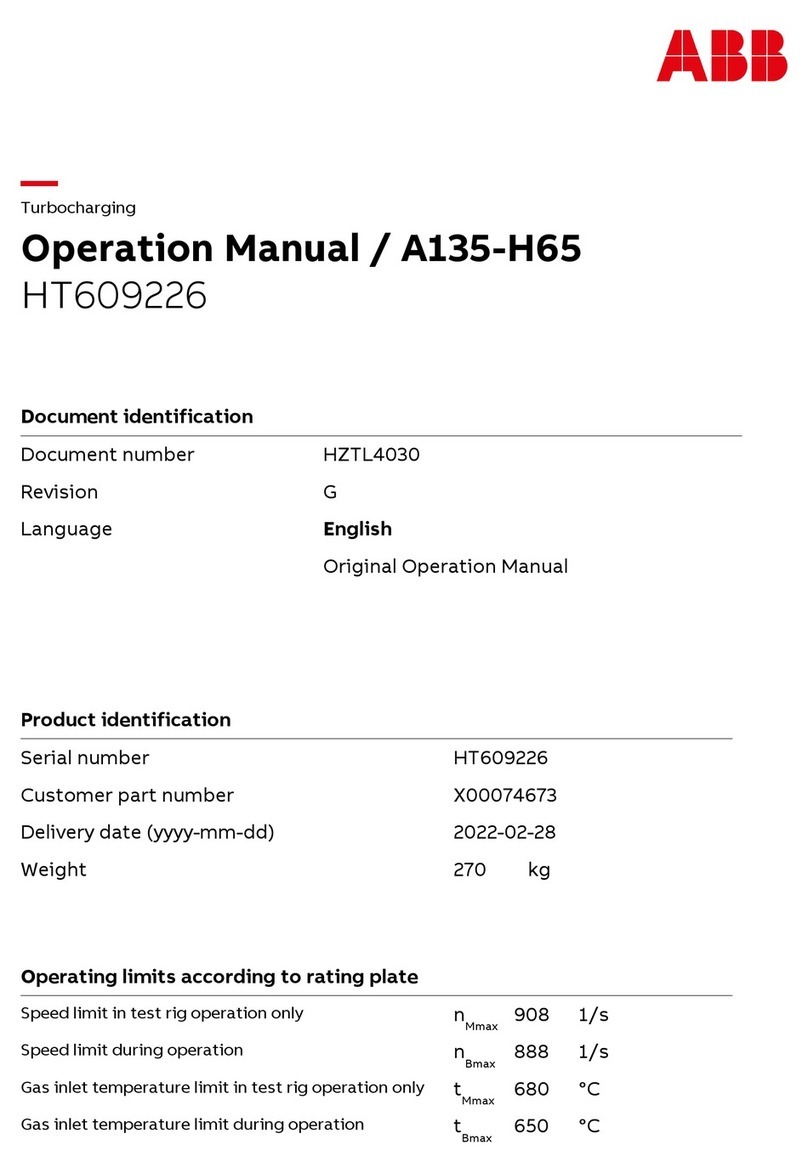
ABB
ABB HT609226 User manual

ABB
ABB TPS 52E01 User manual

ABB
ABB HT609727 User manual
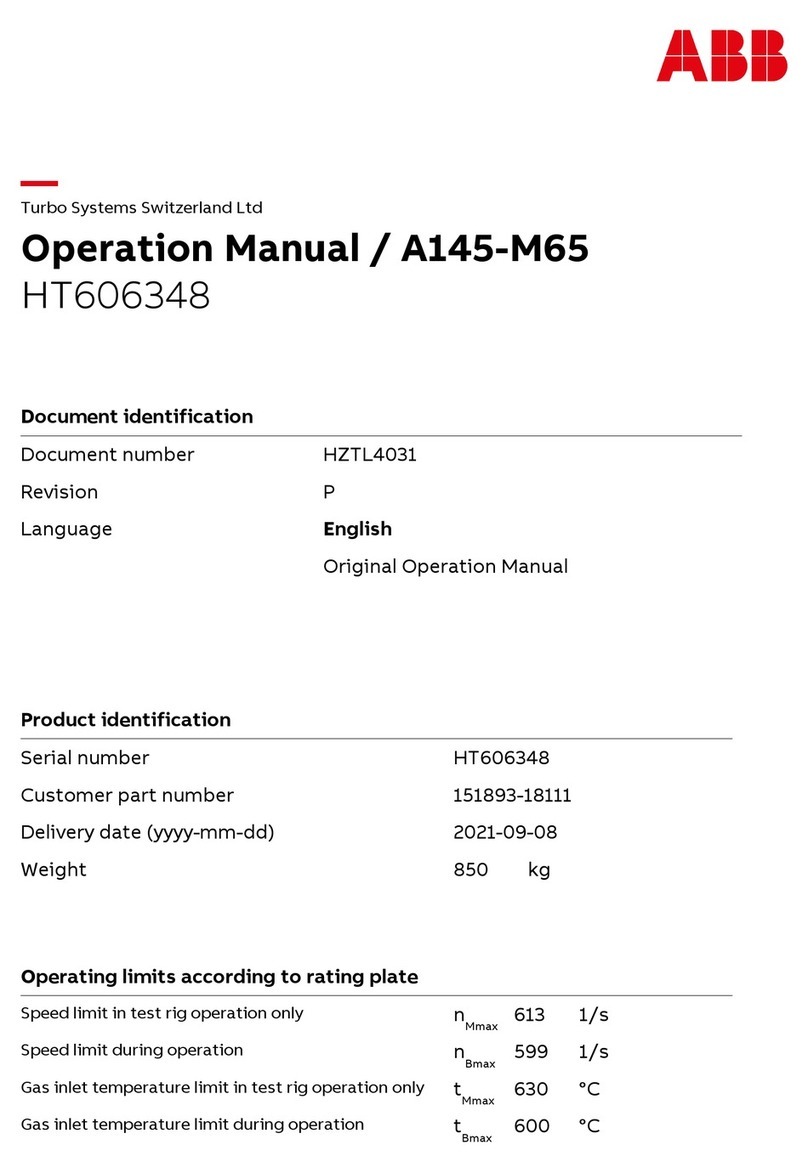
ABB
ABB HT606348 User manual

ABB
ABB Terra DC wallbox Mounting instructions
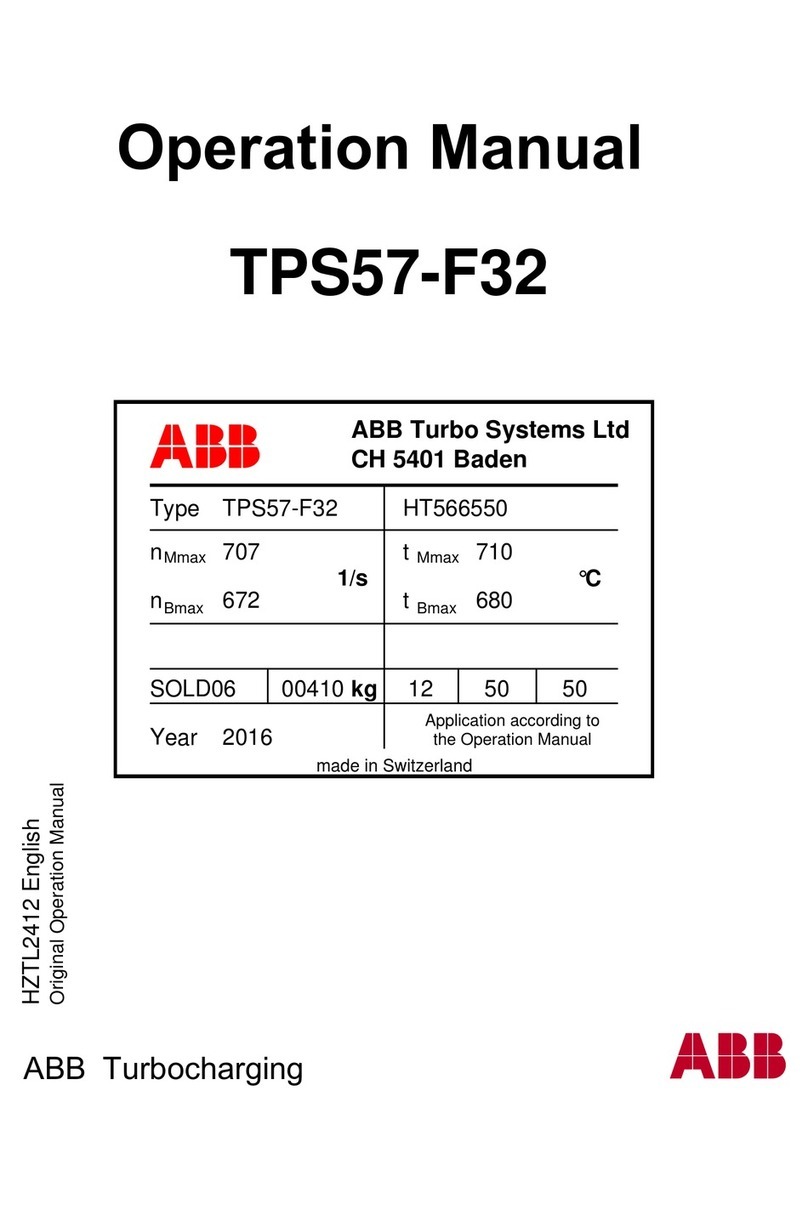
ABB
ABB HT566550 User manual
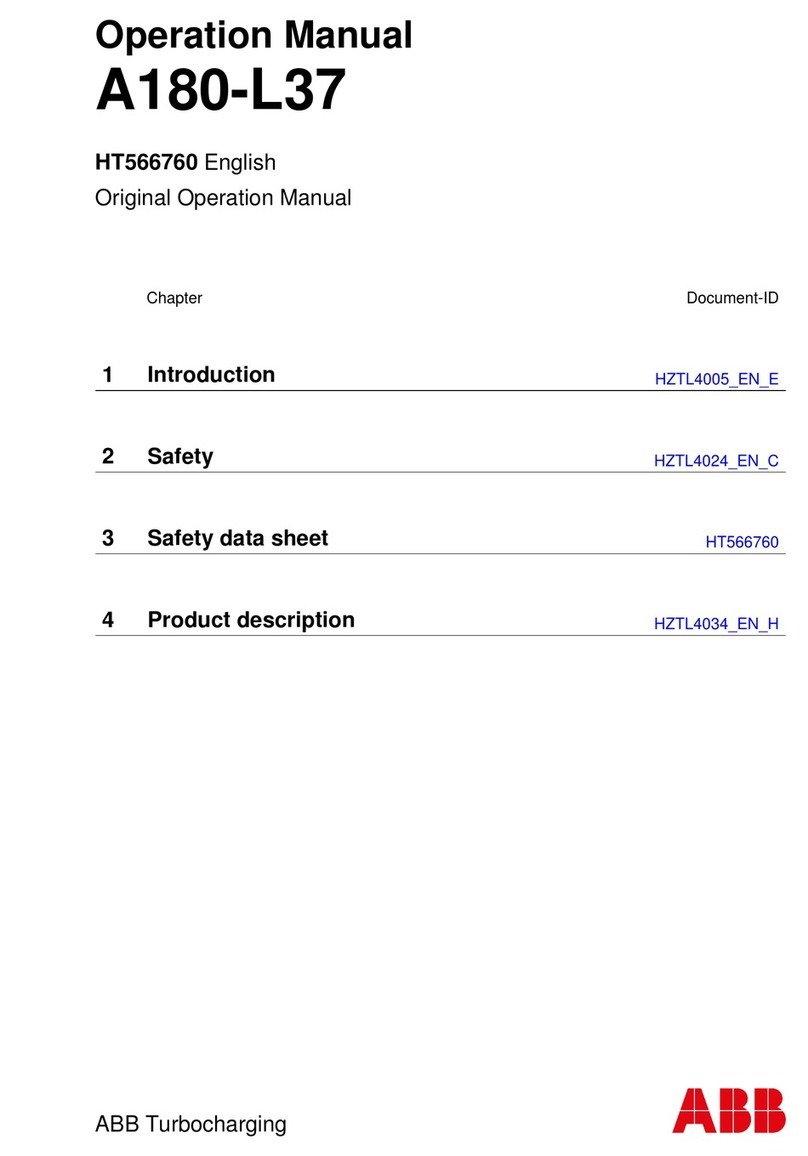
ABB
ABB A180-L37 User manual

ABB
ABB A255-L35 Quick start guide
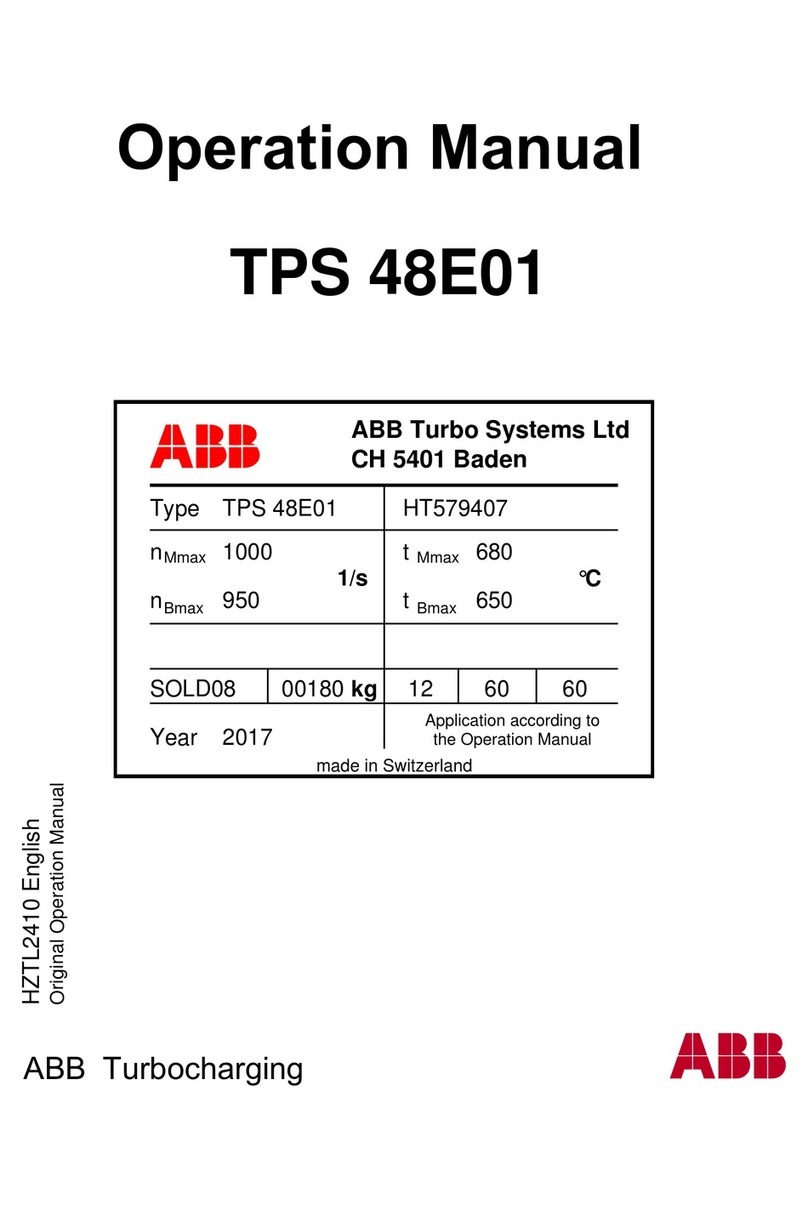
ABB
ABB HT579407 User manual

